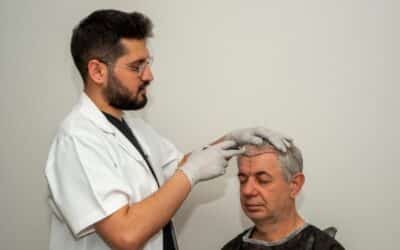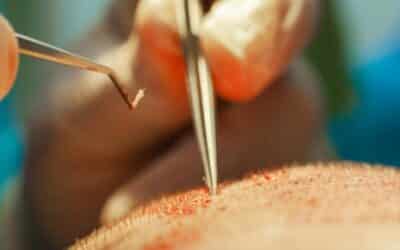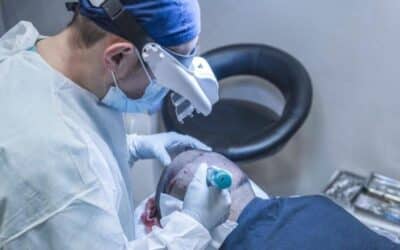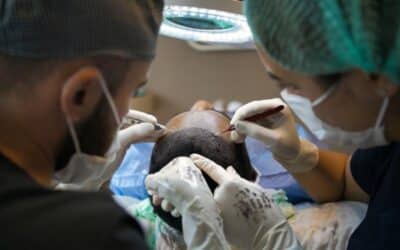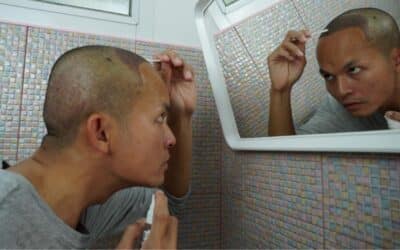FUE hair transplant procedures represent the pinnacle of modern hair restoration techniques. Offering minimal scarring and natural-looking results, the Follicular Unit Extraction (FUE) method stands out in hair transplantation.
Explore our comprehensive guide to all of the FUE procedure steps, from initial evaluation to final results. Once you discover the precision and benefits of FUE, connect with us at Best Hair Transplant to see if our FUE procedure is right for you.
Step 1: Conducting a Pre-Procedure Consultation and Evaluation
Before undergoing FUE, a thorough consultation is essential. The hair transplant surgeon assesses the patient’s hair type, density, and the extent of hair loss. This step ensures that the patient is a suitable candidate and sets realistic expectations.
| Item | Importance |
| Medical History | Identifies potential complications. |
| Hair Analysis | Determines the quality and quantity of the donor’s hair. |
| Expectation Setting | Ensures the patient has realistic hopes. |
| Cost Breakdown | Provides clarity on financial commitment. |
| Procedure Walkthrough | Helps the patient understand the process. |
| Aftercare Discussion | Prepares the patient for post-op care. |
Step 2: Preparing for the FUE Hair Transplant
Preparation is crucial for a successful FUE procedure. Here’s what you need to know when considering an FUE hair transplant.
When meeting with their hair transplant surgeon, patients are advised on pre-operative care, which includes avoiding certain medications and alcohol. Proper scalp care is also emphasized to ensure optimal results.
| Preparation | Description |
| Medications | Avoid blood thinners and certain vitamins. |
| Alcohol & Smoking | Abstain for a few days before the procedure. |
| Scalp Care | Use mild shampoos; avoid harsh treatments. |
| Diet | Consume a balanced diet for better recovery. |
| Rest | Ensure adequate sleep before the procedure. |
| Post-Op Arrangements | Plan for transportation and initial aftercare. |
Step 3: Designing the Hairline

The surgeon will work with the patient to design and plan out the ideal hairline before the FUE procedure begins. The patient will look in a mirror to see and evaluate possible locations for hair graft placements. Several factors are taken into consideration for the best-looking outcome.
- Face and Head Shape: Creating a personalized, natural hairline.
- Age-Appropriateness: Ensuring the hairline isn’t too high or low.
- Style: Prioritizing a flattering and easy-to-style end result.
- Existing Hairline: Seamlessly blending donor and recipient areas.
Step 4: Harvesting Hair Follicles
After the necessary preparations, the FUE hair transplant process begins with extraction. Hair transplant surgeons use specialized tools to remove individual hair follicles from the donor area. This process requires precision and expertise to ensure minimal damage.
- Local Anesthesia: Numbing the donor area for a pain-free experience.
- Punch Tools: Used for extracting individual hair follicles.
- Follicle Preservation: Keeping extracted follicles in a solution to maintain viability.
- Extraction Pattern: Ensuring an even and natural-looking donor area post-extraction.
- Duration: Depending on the number of grafts, the process can take several hours.
- Expertise: A skilled surgeon is crucial for optimal extraction.
Step 5: Preserving the Grafts
When live hair follicles are extracted, the goal is to transplant them back into the scalp as quickly as possible. Until then, they are carefully stored and handled to ensure the greatest success rate.
- Preservation: Storing grafts in organ donor transplant fluid until they’re implanted.
- Timing: Working quickly and skillfully to increase the chances of follicular survival.
- Care: Handling grafts with great care to prevent damage that could render them unusable.
Step 6: Preparing the Recipient Area

Once the follicles are extracted, the recipient area is prepared. Tiny incisions are made to place the hair follicles. The direction, angle, and depth of these incisions determine the naturalness of the result.
- Site Design: Planning the placement of each follicle for a natural look.
- Incision Tools: Using fine blades or needles for precise incisions.
- Depth Control: Ensuring the follicles are placed at the correct depth.
- Angle and Direction: Mimicking natural hair growth patterns.
- Density Considerations: Ensuring a balanced and complete appearance.
- Safety: Sterilizing the area to prevent infections.
Step 7: Implanting the Hair Follicles
The extracted follicles are then carefully implanted into the prepared incisions. This step requires a steady hand and an eye for detail to ensure the hair grows naturally and densely.
- Graft Handling: Using forceps to handle and place each follicle.
- Placement Precision: Ensuring each graft is securely and correctly positioned.
- Natural Appearance: Prioritizing the frontal hairline for a seamless look.
- Density Balance: Distributing follicles evenly for full coverage.
- Immediate Aftercare: Applying a protective dressing to the area.
- Monitoring: Checking for any immediate complications or issues.
Step 8: Supporting Post-Procedure Care and Recovery
After the FUE procedure, proper care is essential for optimal results. Patients are given specific instructions on washing, medication, and avoiding activities. Following these guidelines ensures faster healing and better hair growth.
- Washing Protocols: Using gentle shampoos and avoiding direct water pressure.
- Medications: Prescribe pain relievers and antibiotics if necessary.
- Activity Restrictions: Avoid strenuous activities and direct sunlight.
- Swelling Management: Using cold compresses to reduce inflammation.
- Follow-Up Visits: Monitoring the healing process and hair growth.
- Hair Growth Timeline: Setting expectations for the coming months.
Expected Results and Longevity of FUE Transplants
FUE transplants offer long-lasting results with proper care. Most patients notice significant hair growth within 6-12 months. With advancements in technology, the results of FUE are becoming increasingly consistent and natural-looking.
- Initial Shedding: It’s normal for transplanted hair to shed initially.
- Growth Phase: New hair starts growing after a few months.
- Total Results: Typically, visible after a year.
- Longevity: With care, results can last for many years.
- Touch-Up Sessions: Some patients may opt for additional sessions to increase density or address further hair loss.
- Maintenance: Regular scalp care and a healthy lifestyle can prolong the results.
- Factors Affecting Longevity: Genetics, age, and overall health can influence the duration of results.
- Comparative Analysis: FUE results often surpass other hair transplant methods regarding natural appearance.
- Potential Complications: While rare, it’s essential to be aware of possible side effects and address them promptly.
- Satisfaction Rates: Most patients report high satisfaction levels with the outcomes of their FUE transplants.
FUE Hair Transplant Procedures have revolutionized the world of hair restoration. With its focus on individual follicle extraction and a commitment to natural results, it’s no wonder that FUE is a preferred choice for many seeking to combat hair loss.
As technology and techniques evolve, FUE promises to remain at the forefront of hair transplant solutions. After learning about the FUE procedure step by step, why not takethe next step towards a fuller, more vibrant head of hair?
Don’t wait. Book a Consultation with our best Hair Transplants Los Angeles experts and embark on your journey to hair rejuvenation today!
FUE Hair Procedure FAQs
Find out answers to some frequently asked questions about the FUE hair transplant surgery experience:
FUE, or Follicular Unit Extraction, is a hair transplant method that involves extracting individual hair follicles from a donor area and transplanting them to areas of the scalp with thinning or no hair.
Unlike traditional strip methods that remove a strip of scalp and leaves a linear scar, FUE is a minimally invasive procedure. During FUE, a hair transplant surgeon extracts individual hair follicles, resulting in minimal scarring and a more natural appearance.
The duration of an FUE transplant can vary based on the number of hair grafts required, but typically, it can take 4 to 8 hours.
The procedure is performed under local anesthesia, so patients typically feel minimal discomfort. Some mild soreness can be expected post-operation.
FUE hair transplants involve quick recovery times. It’s important to follow certain aftercare measures to expedite the process and avoid future hair loss:
Follow the surgeon’s instructions for what types of medications to avoid.
Refrain from touching, combing, massaging, or directly showering the hair grafts for the first week post-op.
After several days, start gently cleansing the area with a Sebamed shampoo and special lotion.
During the first couple of weeks post-op, adjust your sleep position to avoid lying on the recipient area.
After about a month, gentle scalp care and normal hair routines can resume if your healing progresses as expected.
New hair growth typically starts after 3-4 months, with significant growth visible by 6-12 months. Initial hair shedding is normal and will resolve itself in just a few months.
To ease your mind before your Best Hair Transplant appointment, you can view our customer recommendations HERE. Check out our Google reviews and Yelp reviews, too. We can’t wait to help you start restoring your lost hair.
Don’t let another day go by wondering about your hair loss restoration options. Fill out the contact form on this page to book a consultation today!



